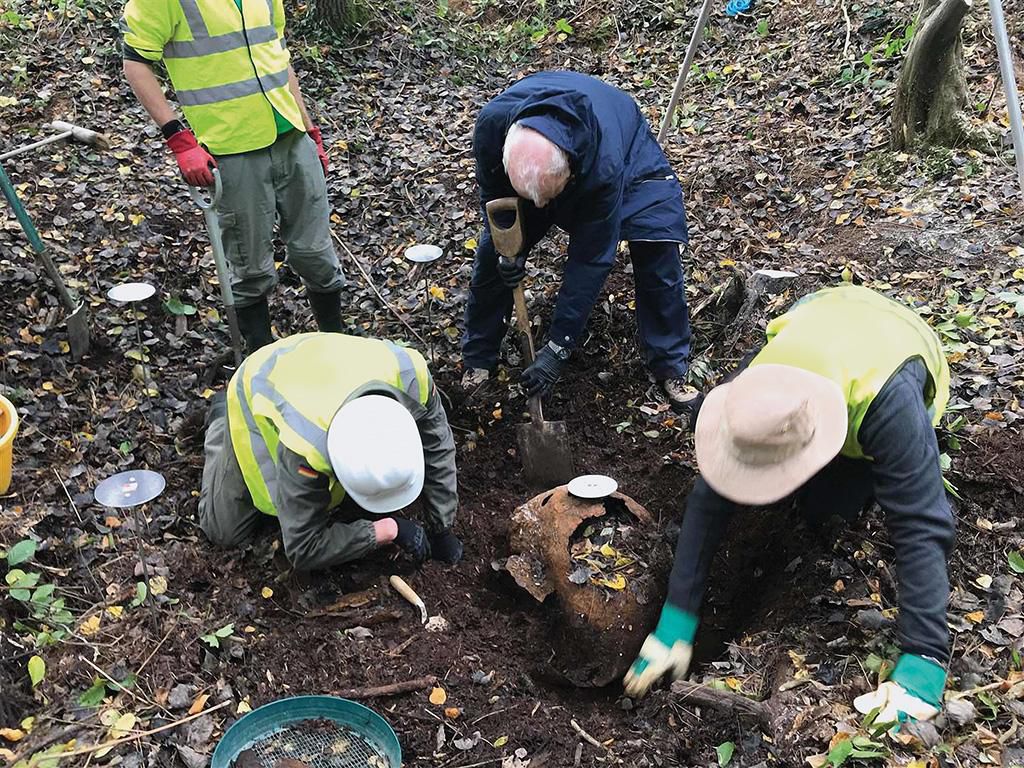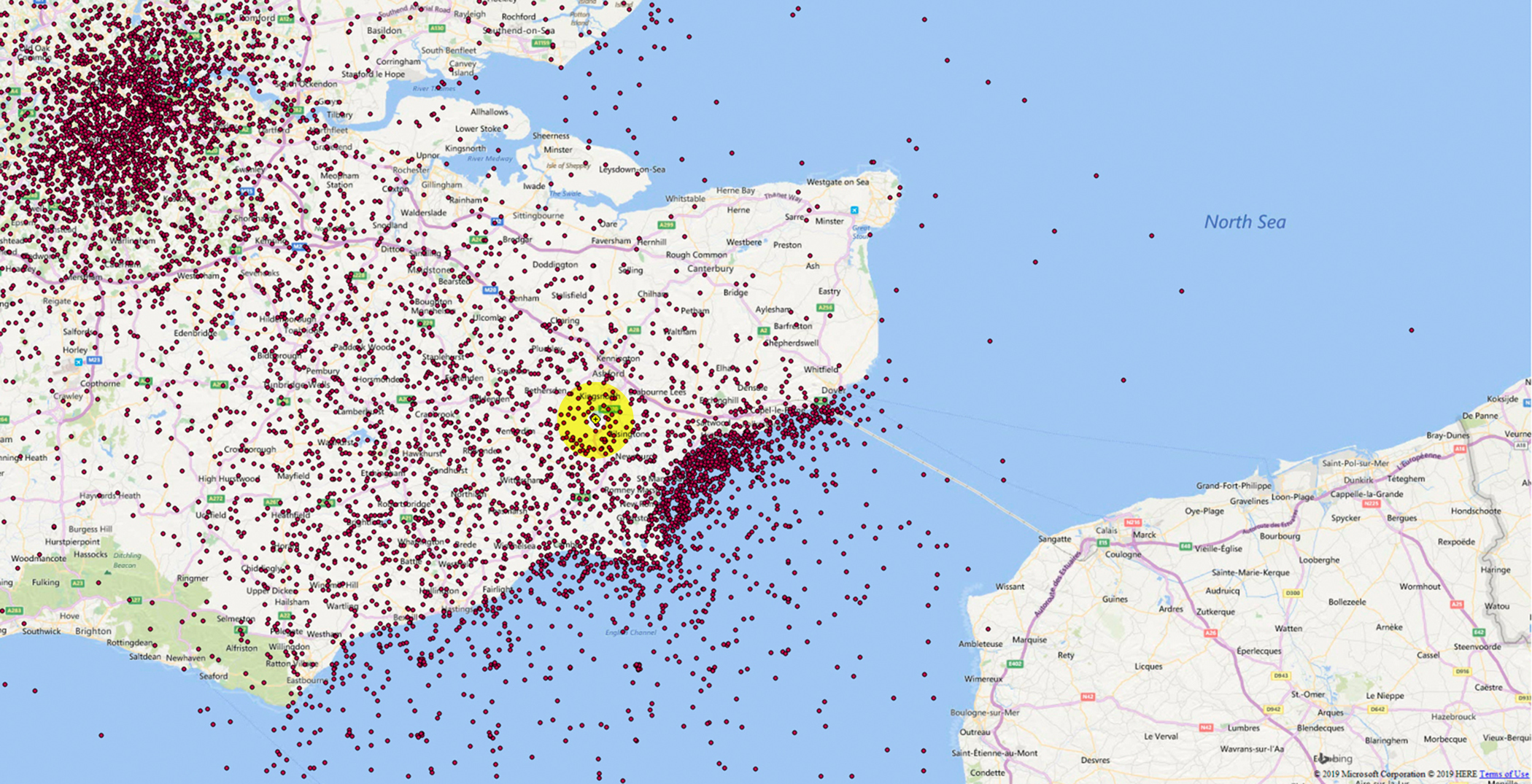Winston
Lorenzo von Matterhorn
- Joined
- Jan 31, 2009
- Messages
- 9,560
- Reaction score
- 1,748
These Amateur Archaeologists Dig Up the Buzz Bombs That Fell on England in WW2
Two brothers scour the English countryside for remnants of Hitler’s vengeance weapons.
https://www.airspacemag.com/history-of-flight/big-dig-buzz-bomb-180973972/?
Excerpts:
Digging up the remains of a 75-year-old bomb is hard work, but the Welch brothers are used to it. This dig near Bromley Green is their eighth excavation of a V-1 crash site. (They have also examined five V-2 rocket impacts and the crash site of a Tempest fighter flying bomb patrol.) The county of Kent, where Colin lives, was the closest part of England to the V-1 launch sites in France, and it was where most of the flying bombs crashed or were shot down. “It was almost like the flying bomb and the V-2 rocket story found us,” he explains. “Two Typhoons [fighters] collided near where I live—they were on V-1 patrol. There was a flying bomb in the valley just by the side of us...everywhere we looked, we found V-weapons all over the place.”
The brothers locate the crashed V-weapons by examining county and national records, including the official “bomb census”—an attempt by the wartime authorities to record the damage caused by falling bombs. Because those records are incomplete, they also check combat reports from fighter pilots on V-1 patrols.
The brothers work closely with historical officers for the county of Kent and send a copy of the final report from each dig to Britain’s Ministry of Defence. They make a detailed risk assessment at each site before a dig begins. Sean explains that V-2s hit the ground at three times the speed of sound, so there is little chance that any unexploded warhead remains. He continues: “The V-1 on detonation leaves a characteristic crater, so when we see this, we know that it has exploded.”
This latest excavation is extremely muddy. The hole fills with water, which must be pumped away. Colin, inside the crater, digs with a trowel, scanning for fragments with a metal detector and directing the shovel of a mobile excavator. As scoops of earth are deposited beside the crater, Sean re-scans them with another metal detector. Every small piece of metal from the V-1 blast will be cleaned, conserved, and photographed for the final report on the dig, to be filed with Kent’s historical records office.
Both the pilots and the gun crews quickly learned that the V-1s were traveling too low and too fast to be easily hit. Some of the guns opened fire on V-1s while they were still being chased by warplanes, sometimes resulting in “friendly fire” incidents and a few fatalities. “The AA [anti-aircraft] guns were supposed to stop firing once they picked up any fighters chasing the V-1s, but in many cases they didn’t and some good experienced pilots were lost because of it,” says Thomas.
The high speed of the flying bombs made it almost impossible for most aircraft to catch them. Fast fighters like the latest Spitfires, Tempests, and American-built Mustangs and Thunderbolts were modified for maximum speed by stripping off everything that wasn’t needed—including armor and paint—and souping up their engines. Typhoons, Mosquitoes, Beaufighters, Fireflies, and American Black Widows were also pressed into the air fight against the V-1s, as were a few new Gloster Meteors, the only Allied jets that fought in combat during the war. They were fast enough but had trouble with their cannon.
The V-1 excavation has come to an end after 10 hours. The hole has now been filled and leveled, and the recovered fragments carefully stored for analysis. A key find is the V-1’s jet tube, a crumpled and corroded piece of steel weighing hundreds of pounds, buried deep in the crater and prevented from rusting away by a layer of heavy clay.
A few days later, in a workshop filled with intricate metal parts recovered from V-1 and V-2 impact sites, Colin Welch confirms a strange account in the wartime records: a Mustang pilot claimed only half a kill for bringing down the V-1 newly excavated from Bromley Green. “You’ve got the Mustang flying behind the V-1, going full speed to try and catch it up,” he says. “But then a Hawker Tempest swooped in from the front quarter and below and shot at the thing.” Corroded ammunition strikes show the Mustang’s machine gun bullets hit the jet tube directly from behind, but the Tempest’s 20mm cannon also hit the front of the engine. “They both got it, and the archive record is actually right—half a kill for each of them,” he says. “But it is absolutely astonishing to get the evidence in a day’s excavation.”
So far the Welch brothers have found only those V-1 and V-2 impact sites where the warhead and leftover fuel have detonated in a final explosion. Many steel parts have now rusted away, but they often find pieces of the control mechanisms and fuel system that were made from aluminum. A V-1 impact site at Packing Wood in Kent last year was especially fruitful—it yielded much of the flying bomb’s control compartment, which showed where several bullets from the attacking aircraft had hit it.

The map they use:

Two brothers scour the English countryside for remnants of Hitler’s vengeance weapons.
https://www.airspacemag.com/history-of-flight/big-dig-buzz-bomb-180973972/?
Excerpts:
Digging up the remains of a 75-year-old bomb is hard work, but the Welch brothers are used to it. This dig near Bromley Green is their eighth excavation of a V-1 crash site. (They have also examined five V-2 rocket impacts and the crash site of a Tempest fighter flying bomb patrol.) The county of Kent, where Colin lives, was the closest part of England to the V-1 launch sites in France, and it was where most of the flying bombs crashed or were shot down. “It was almost like the flying bomb and the V-2 rocket story found us,” he explains. “Two Typhoons [fighters] collided near where I live—they were on V-1 patrol. There was a flying bomb in the valley just by the side of us...everywhere we looked, we found V-weapons all over the place.”
The brothers locate the crashed V-weapons by examining county and national records, including the official “bomb census”—an attempt by the wartime authorities to record the damage caused by falling bombs. Because those records are incomplete, they also check combat reports from fighter pilots on V-1 patrols.
The brothers work closely with historical officers for the county of Kent and send a copy of the final report from each dig to Britain’s Ministry of Defence. They make a detailed risk assessment at each site before a dig begins. Sean explains that V-2s hit the ground at three times the speed of sound, so there is little chance that any unexploded warhead remains. He continues: “The V-1 on detonation leaves a characteristic crater, so when we see this, we know that it has exploded.”
This latest excavation is extremely muddy. The hole fills with water, which must be pumped away. Colin, inside the crater, digs with a trowel, scanning for fragments with a metal detector and directing the shovel of a mobile excavator. As scoops of earth are deposited beside the crater, Sean re-scans them with another metal detector. Every small piece of metal from the V-1 blast will be cleaned, conserved, and photographed for the final report on the dig, to be filed with Kent’s historical records office.
Both the pilots and the gun crews quickly learned that the V-1s were traveling too low and too fast to be easily hit. Some of the guns opened fire on V-1s while they were still being chased by warplanes, sometimes resulting in “friendly fire” incidents and a few fatalities. “The AA [anti-aircraft] guns were supposed to stop firing once they picked up any fighters chasing the V-1s, but in many cases they didn’t and some good experienced pilots were lost because of it,” says Thomas.
The high speed of the flying bombs made it almost impossible for most aircraft to catch them. Fast fighters like the latest Spitfires, Tempests, and American-built Mustangs and Thunderbolts were modified for maximum speed by stripping off everything that wasn’t needed—including armor and paint—and souping up their engines. Typhoons, Mosquitoes, Beaufighters, Fireflies, and American Black Widows were also pressed into the air fight against the V-1s, as were a few new Gloster Meteors, the only Allied jets that fought in combat during the war. They were fast enough but had trouble with their cannon.
The V-1 excavation has come to an end after 10 hours. The hole has now been filled and leveled, and the recovered fragments carefully stored for analysis. A key find is the V-1’s jet tube, a crumpled and corroded piece of steel weighing hundreds of pounds, buried deep in the crater and prevented from rusting away by a layer of heavy clay.
A few days later, in a workshop filled with intricate metal parts recovered from V-1 and V-2 impact sites, Colin Welch confirms a strange account in the wartime records: a Mustang pilot claimed only half a kill for bringing down the V-1 newly excavated from Bromley Green. “You’ve got the Mustang flying behind the V-1, going full speed to try and catch it up,” he says. “But then a Hawker Tempest swooped in from the front quarter and below and shot at the thing.” Corroded ammunition strikes show the Mustang’s machine gun bullets hit the jet tube directly from behind, but the Tempest’s 20mm cannon also hit the front of the engine. “They both got it, and the archive record is actually right—half a kill for each of them,” he says. “But it is absolutely astonishing to get the evidence in a day’s excavation.”
So far the Welch brothers have found only those V-1 and V-2 impact sites where the warhead and leftover fuel have detonated in a final explosion. Many steel parts have now rusted away, but they often find pieces of the control mechanisms and fuel system that were made from aluminum. A V-1 impact site at Packing Wood in Kent last year was especially fruitful—it yielded much of the flying bomb’s control compartment, which showed where several bullets from the attacking aircraft had hit it.

The map they use:




